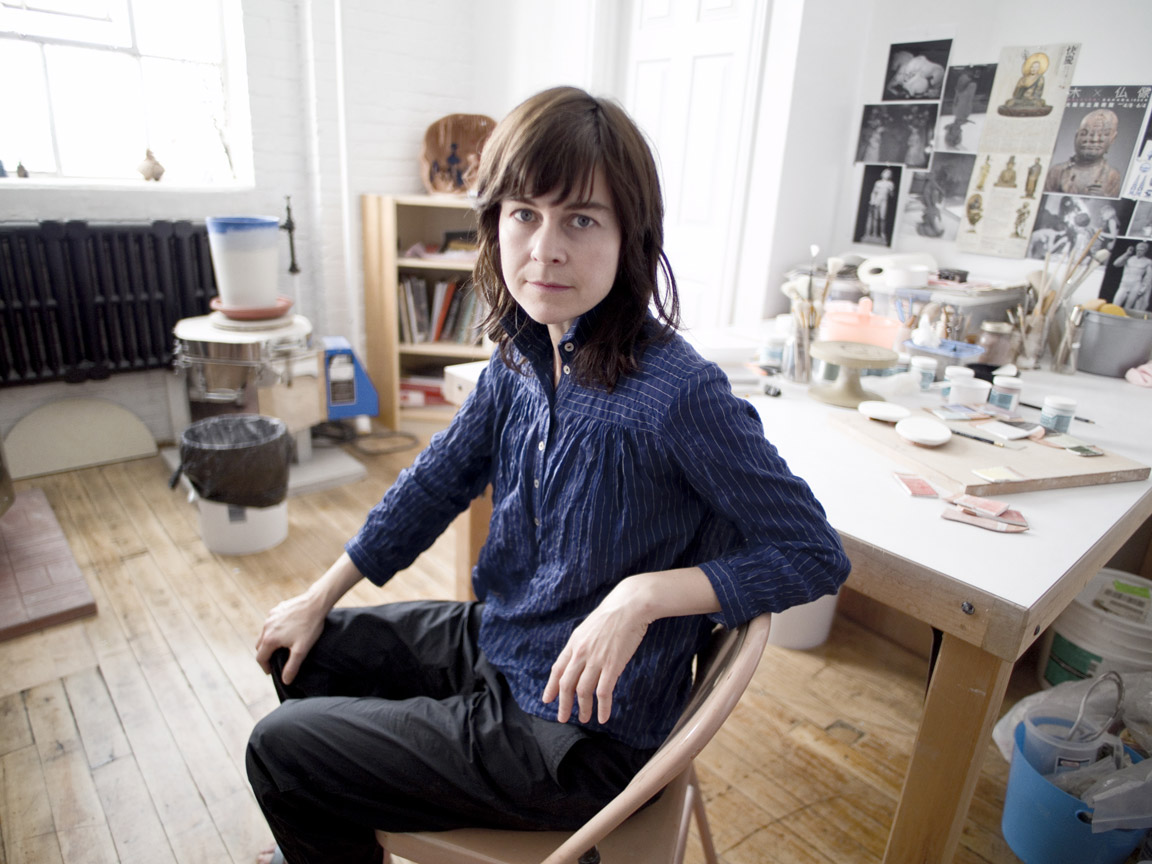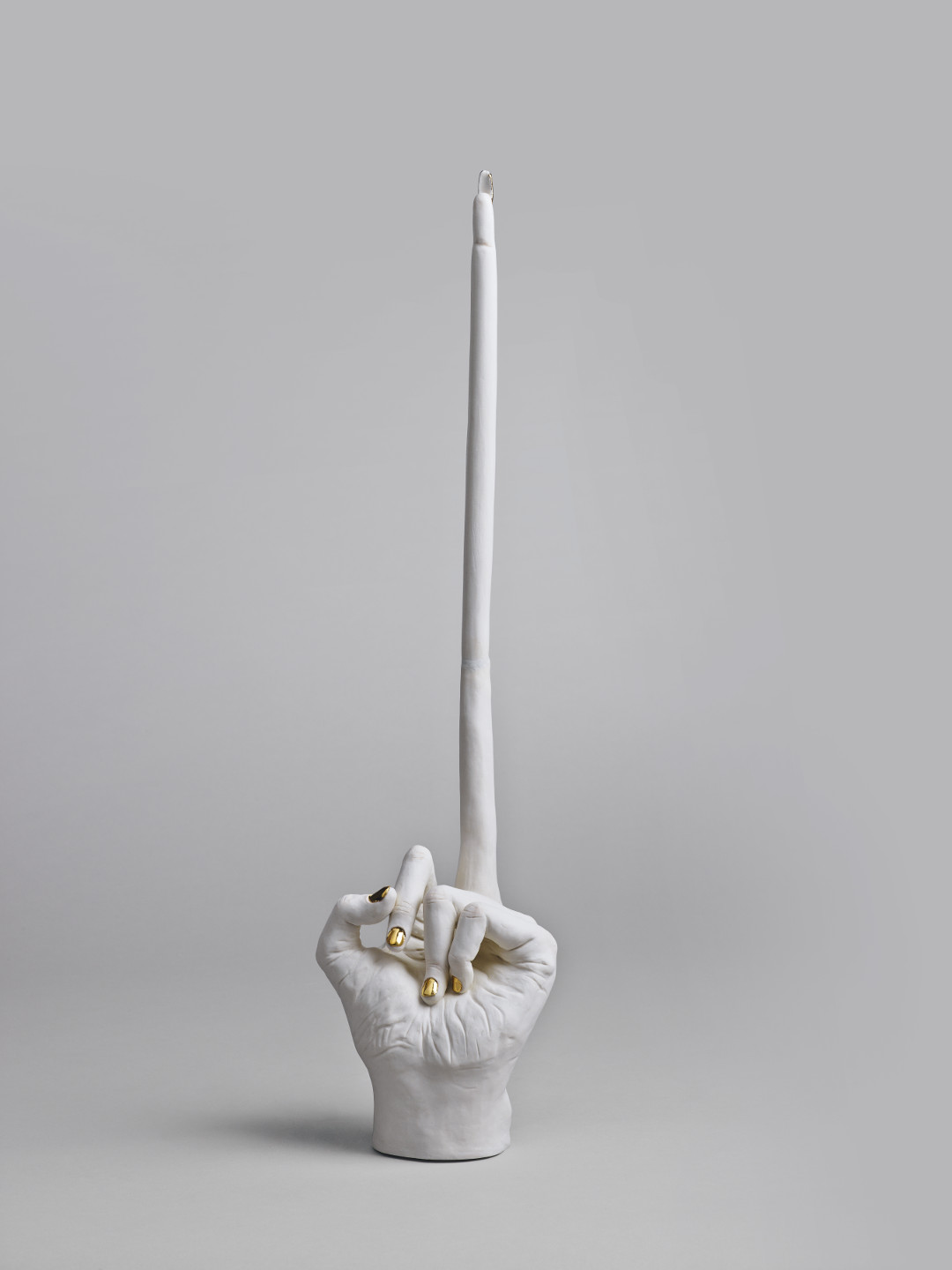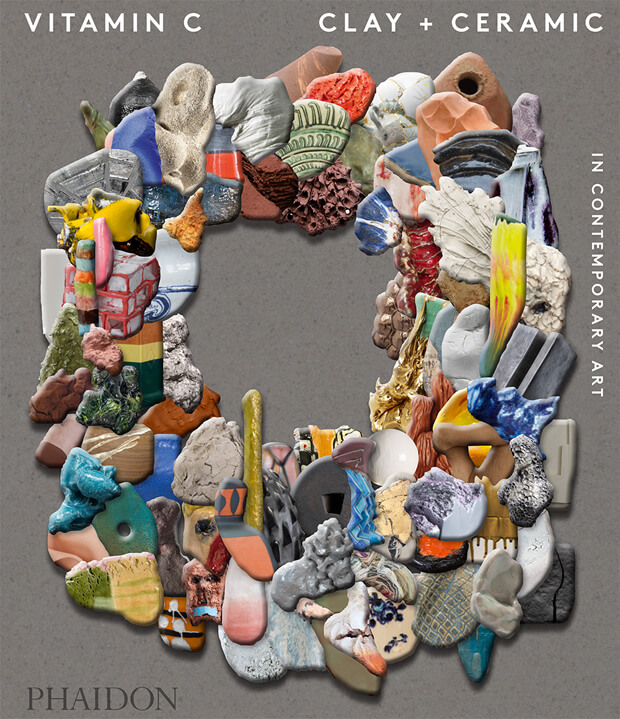
Shary Boyle - Why I Create
Exploring the inspirations and attitudes of artists working with clay and ceramic, featured in Vitamin C
The human figure is the bedrock of Shary Boyle’s often fantastical and transgressive artistic practice. Proficient across a range of media, including drawing, painting, performance and sculpture, Boyle came to international prominence in 2013 when she represented Canada at the 55th Venice Biennale. Her multimedia presentation in Venice’s Giardini, titled Music for Silence (2013), included virtuoso porcelain depictions of stooped female figures bearing colossal loads on their backs.
In interviews Boyle emphasized that she was a figurative artist interested in narrative, and that her sculptural pieces are, importantly, handmade. ‘The hand and the idea are absolutely integrated in my work, and that’s where the power comes out of it,’ she told critic Coline Milliard. ‘Every piece of work of mine that you see is me.’
Here the Vitamin C: Clay and Ceramic in Contemporary Art featured artist tells us how she began working with clay alongside hobby classes for grandmothers, and why she still loves this medium, which remains, for her, the art material closest to flesh.

Who are you and what’s your relationship to clay and ceramics? I was raised in Ontario, the youngest by far of a large, working class family. My first language is drawing, something I’ve continued uninterrupted since childhood. Making images allowed me to visually articulate troubling contradictions: the alienation I felt from the world, the silent injustices under many surfaces, the sense of my inner observations not matching the accepted outer story. I have hoped my art could engage a wide range of people on a deeper register of connection. Maybe I make art more like music or creative writing; I think about cadence, arc of feeling, intention, plot, melodic structure, tone, intuition and imagination.
I first started working with ceramics in 2002, through infiltrating basement hobby classes for grandmothers. I developed friendships with these women, while gently examining their socialized yearning for romance and nostalgia. We traded skills and I subverted their vintage figurine molds - getting deep into obsolete decorative, slip-casting and assembly techniques. In ceramics and in life I am so curious about non-dominant or marginalized knowledge, continually seeking surprising collaborations that bridge seemingly disparate worlds.
Clay is softly firm and takes fingerprints. Mud embodies humility. It's the closest organic art material we have to flesh. As an artist who has always created human forms to communicate through, there's this thread from the Venus figurines, Geppetto and Dr. Frankenstein straight to my dirty hands. And then there’s the alchemy of fire, the thrilling risk of losing all in the kiln, and the endless seduction and suspense of transformation.
Why do you think there’s an increased interest around clay and ceramics right now? It's an immediate material that suits a long-standing interest in contemporary art for impulsive, imperfect, abstracted gesture. It can be nicely sloppy. It is ordinary and of the every day. At the same time it is classical, global and ancient, so can hold cultural and ritualistic significance as well as humour and failure. It's audacious for a hands-off, highly educated fine art society to flirt with labour and 'craft'. The material is irresistible to makers; one can achieve interesting experimental results sculpturally and through decorative glazes with little skill. Yet masterful commitment can yield impressive results that recall the treasures of monarchies and lost empires.
Ceramics is sometimes regarded as decorative, rather than fine arts. Does the distinction bother or annoy you? What art isn't decorative? What function does fine art serve? I ask to provoke deeper consideration of the implied value system in the distinction. Lets question who gets to distinguish 'meaning' and qualify ideas. Or determine when an object is 'only' something pretty to look at, or for ‘service’. Those terms of connoisseurship are disturbingly reminiscent of Western historical comparisons between men and women. Let’s look closely at who decides the terms of good art and bad art, for whose benefit. At this point in history can we lay down our tired burdens of creative authority, material and class hierarchies? Ceramics have their own ancient lineages and myriad roles in most societies on the planet, but in the end clay is simply a substance that can be used to form an object. We are already past accepting that anything in the world can be employed to make fine art.
Whose work in this field do you admire? I am a huge fan of the ceramic art scene of Rankin Inlet, Nunavut. Starting in the ‘60’s as a colonial Canadian government initiative, then re-invented privately as Matchbox Gallery in the ‘80’s, this Arctic studio has supported a lineage of exceptional Inuit artists, using clay and barrel firing to create fantastically complex and collaborative narrative pots and sculptures.
The 18th century modeler Johann Joachim Kändler, who worked for Meissen in their earliest years, remains my favourite European figurative artist in porcelain. Although his technical virtuosity remains remarkable, it is the canny vitality of his sculpting that is timeless. His characters, their expressions and gestures remain alive, incomparable to any peer of his era.
What are the hardest things for you to get ‘right’ and what are your unique challenges? I am not trained in the chemistry of glaze mixing or the wheel. I have devised certain sculptural approaches that may be unconventional, and sometimes cause- or solve - more problems technically than if I had learned from traditional sources. I push porcelain in ways it often resists- there is a lot of massaging and convincing on my part to gain the trust of the material. There is a ritualistic acceptance of chaos within ceramics, an almost spiritual letting-go to some higher power. You can try to control it but it will always have the last laugh. It replicates the experience of mortality, and in that I find the process more about humility than mastery or dominance.
What part does the vulnerability of the material play in things? The tension between beauty and repulsion is strong in ceramics. I like this push-pull, it is confrontational and revealing. It seems like the right atmosphere in which to question value and risk vulnerability, primary motivations of my work. Its fragility asks to be actively taken care of-which is a turn-off to some people and so acts as it’s own kind of filter.
Is how you display a piece an important element of the work itself? Do you ever suggest how something might be displayed? Each piece has its own best conditions. If it is terribly ornate or unglazed, glass will preserve it and keep the dust off. If it is solid- pick it up and look at it closely. It's easier than handling a newborn.
What’s next for you, and what’s next for ceramics? (At the time of this interview)____ I'm deep into a new series inspired by the clown from Henry Miller's exquisite fable The Smile at the Foot of the Ladder, for a fall 2017 exhibition in Quebec City. Concurrently I'm working with the Matter Factory in Kansas City to develop a custom clay body for a large outdoor sculptural commission I'm producing for the Gardiner Ceramic Museum in Toronto. Earthlings, an Esker Foundation exhibition I co-curated of six Nunavut artists and my ceramics, drawings and collaborations is touring nationally throughout 2018. I always like to keep my eye on Inspirations Studio (a skill-building expressive ceramic centre for marginalized women in Toronto) to see the direction of their future work.

Clay and ceramics have in recent years been elevated from craft to high art material, with the resulting artworks coveted by collectors and exhibited in museums around the world. Vitamin C: Clay and Ceramic in Contemporary Art celebrates the revival of clay as a material for contemporary artists, featuring a wide range of global talent selected by the world's leading curators, critics, and art professionals. Packed with illustrations, it's a vibrant and incredibly timely survey - the first of its kind. Buy Vitamin C here. And if you're quick, you can snap up work by some of the artists in it at Artspace here.